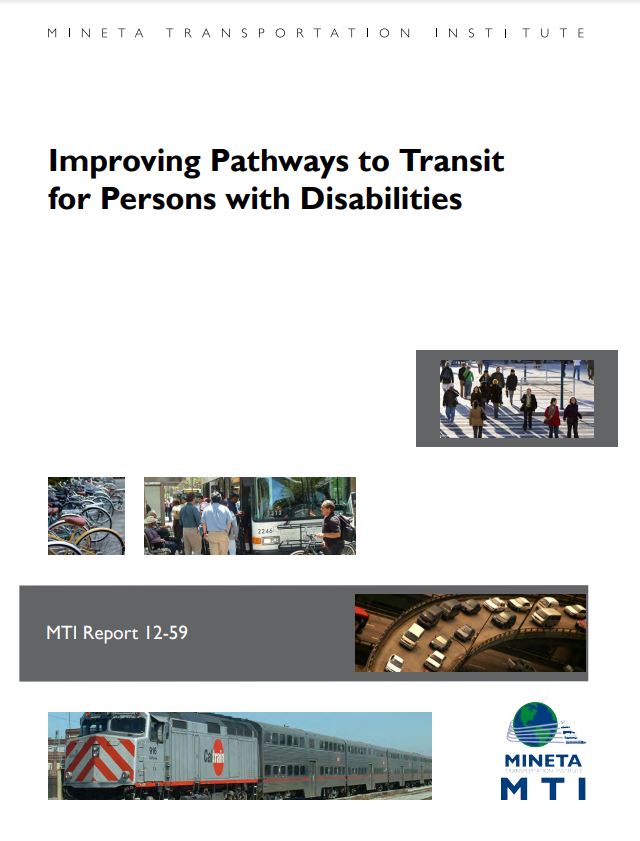Abstract
Persons with disabilities can achieve a greater degree of freedom when they have full access to a variety of transit modes, but this can only be achieved when the pathways to transit – the infrastructure and conditions in the built environment – allow full access to transit stops, stations, and vehicles. Since passage of the Americans with Disabilities Act (ADA) in 1990, many transit agencies and governmental jurisdictions have made significant progress in this area. Policy initiatives, incremental enhancements, modifications, and other measures undertaken by transit agencies and their partners have significantly improved access to transit for persons with disabilities, others who rely on public transportation, and individuals who chose to utilize these services.
This research study explores, through case study work, efforts that have been effective in improving pathways to transit. Interviews and site visits were conducted with five transit agencies, along with their partners, that are actively engaged in improving pathways to connect transit consumers – particularly people with disabilities – with transit stations and stops. These agencies are: Broward County Transit (Broward County, FL), Memphis Area Transit Authority (Memphis, TN), NJ TRANSIT (Newark and New Brunswick, NJ), Tri-County Metropolitan Transportation District of Oregon (Portland, OR), and Link Transit (Wenatchee, WA). Promising practices and/or lessons were identified through the case study analysis; these should be considered by any transit agency seeking to create improved access to its services for persons with disabilities.
- Research Brief
- The report is also available for free download from the Mineta Transportation Institute.
